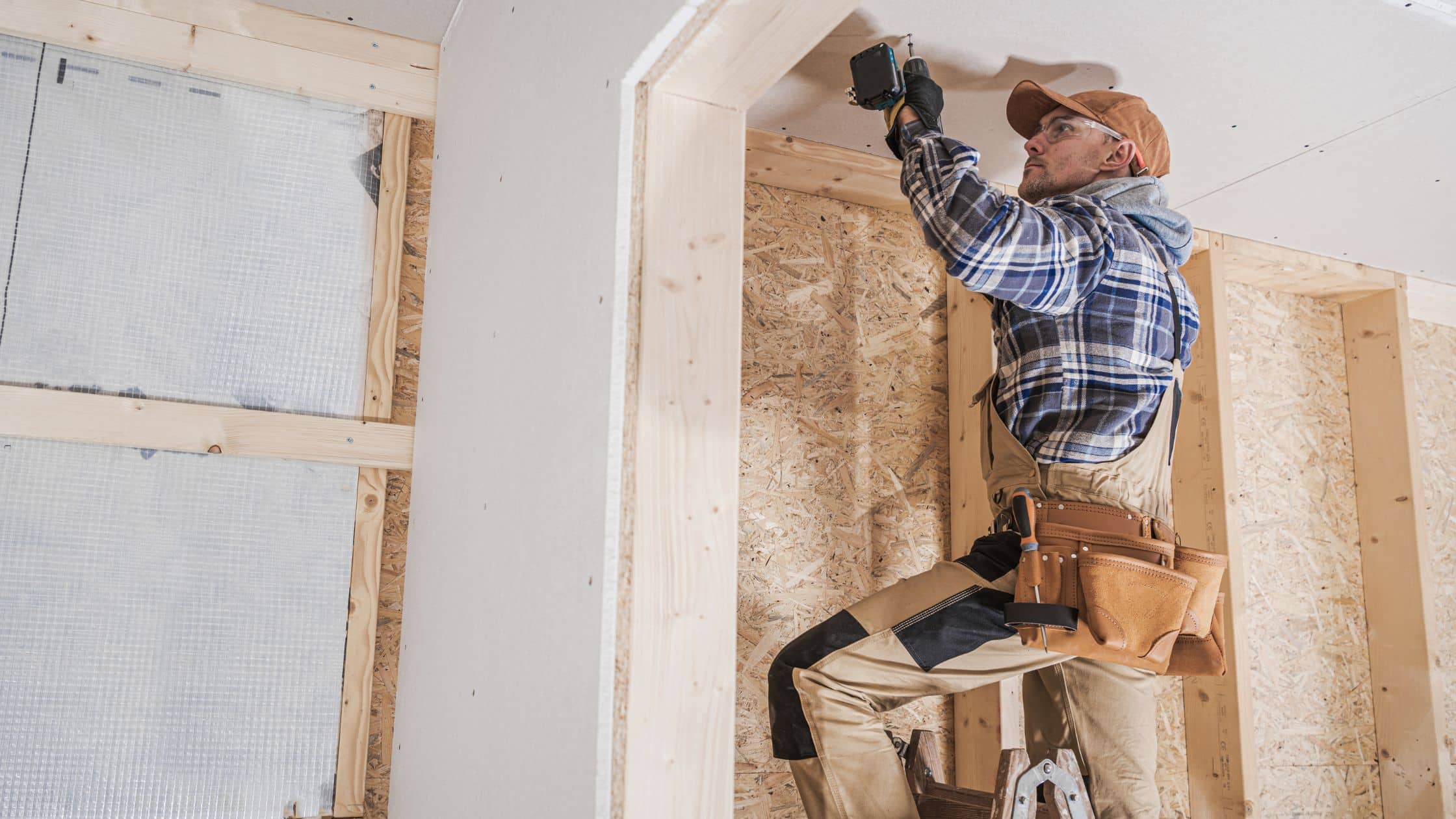
How to Fix a Small Hole in Drywall (The Right Way)
Small holes in drywall are one of the most common repair jobs we come across—and one of the most commonly done wrong. Whether it’s from a door handle, a wall anchor, or a picture hanger gone rogue, patching a hole the right way means you won’t see it after the paint dries.
Here’s how we do it—and how you can, too.
🧰 What You’ll Need:
-
4″x4″ or 6″x6″ drywall patch (mesh or metal-backed)
-
Joint compound (pre-mixed)
-
Primer
-
Touch-up paint
-
Optional: hairdryer or heat gun (to speed drying)
🔧 Step-by-Step: How We Fix It
1. Clean and Square the Hole
Jagged holes leave you with a bumpy, weak repair. Start by trimming around the damage using a utility knife or drywall saw, creating a square or circular opening with clean, straight edges. This gives your patch a solid surface to adhere to and prevents future cracking or bulging. Be sure to cut slightly larger than the damage if needed to clean everything up fully.
🛠 Pro tip: Don’t leave loose drywall paper or crumbled edges—they’ll bubble when mudded. A clean edge is a strong edge.
2. Apply the Patch
For holes under 2 inches wide, a self-adhesive mesh or metal-backed patch is usually perfect. Stick it directly over the hole and press it firmly into place.
For anything bigger (2–6 inches), cut a replacement piece of drywall to fit your hole. Use a piece of wood (like a paint stir stick or scrap lath) as a backer: slip it behind the hole, screw through the wall into it, and then screw your drywall patch into the front of the board. This gives the patch stability and prevents it from sagging inside the wall.
🎯 The goal: Your patch should sit flush with the surrounding surface—no wobble, no gaps.
3. Feather the Edges with Joint Compound
Using a 6-inch drywall knife, apply a thin coat of joint compound (also called mud) over the patch and about 2–3 inches beyond the edges. Smooth it out evenly, and don’t try to build it all in one pass. Once dry (this can take several hours), lightly sand and apply a second, wider coat to further blend the transition. Repeat once more if needed.
🪶 Feathering means each coat gets wider and thinner at the edges—it’s what hides the patch. If you feel like you’re icing a cake, you’re doing it right.
4. Sand and Inspect Under Good Light
Once your final coat dries, sand the area gently with a fine-grit sanding sponge or drywall sanding screen. Then hold a flashlight or work light at a steep angle across the wall (what we call “raking light”). This helps you spot any humps, dips, or knife marks you’d miss in normal lighting.
🧼 You want the surface to feel like one continuous wall—not like a bump with a border.
5. Prime, Paint, and Blend
Even if you’re using the exact same paint as before, always prime first. Unprimed joint compound will absorb paint unevenly and create a dull, discolored spot called “flashing.” Use a small roller to prime just the repaired area, then lightly roll your final paint over and beyond it to blend.
🎨 Feather the paint out just like the compound—soft edges make the patch disappear.
⚠️ Common Mistakes to Avoid
❌ Skipping the Prep
Don’t just slap a patch over a ragged hole. Uneven edges and loose drywall paper will cause bubbles, cracking, or peeling down the line. Clean, square cuts are the foundation of a clean repair.
❌ Using Too Much Mud
Thick globs take forever to dry and are way harder to sand. More isn’t better—thin, smooth coats are what make the repair disappear.
❌ Rushing the Dry Time
Trying to sand or coat too soon just ruins your work. If it’s still cool or damp to the touch, wait. Use a fan or hairdryer on low if you’re in a hurry, but don’t force it.
❌ Skipping the Primer
Even if your paint matches perfectly, the patched area will flash and show through without primer. This one step separates the pros from the patch-it-and-pray crowd.
❌ Forgetting About Texture
If your wall isn’t perfectly smooth, your patch shouldn’t be either. A flat spot in a textured wall is just as obvious as a hole. Match the texture—or at least feather it in.
💡 Why We Do It This Way
Too often, small holes get the “spackle and hope” treatment—just slap some filler in and dab on paint. That works… until it doesn’t. We’ve seen plenty of puckered, cracked, or obvious patches that looked fine for a week, then failed.
Our process takes slightly more time, but it ensures:
-
The patch holds up over time
-
It disappears visually and under touch
-
You won’t have to redo it later
👷♂️ DIY or Hire It Out?
If you’re patient and detail-oriented, this is a great DIY repair. The key is drying time, light sanding, and not rushing the final coat. If you’re working with a large number of patches or a tight schedule, that’s where pros like us come in—ready with the materials, finish-matching, and touch-up techniques to get it done in one go.




No Comments
Sorry, the comment form is closed at this time.